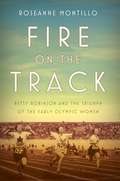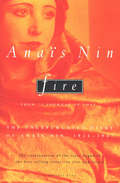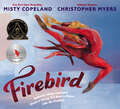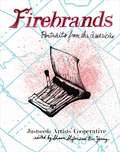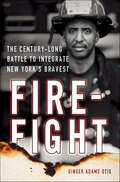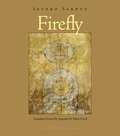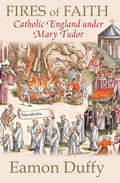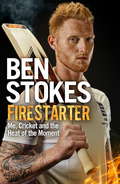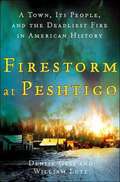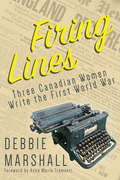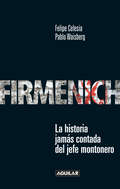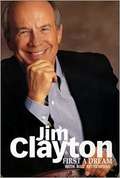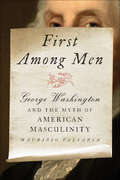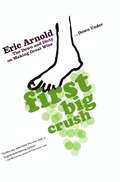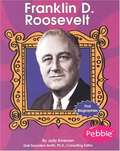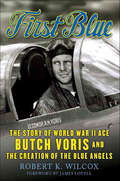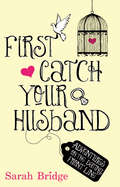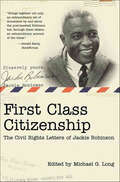- Table View
- List View
Fire on the Track: Betty Robinson and the Triumph of the Early Olympic Women
by Roseanne MontilloThe inspiring and irresistible true story of the women who broke barriers and finish-line ribbons in pursuit of Olympic GoldWhen Betty Robinson assumed the starting position at the 1928 Olympic Games in Amsterdam, she was participating in what was only her fourth-ever organized track meet. She crossed the finish line as a gold medalist and the fastest woman in the world. This improbable athletic phenom was an ordinary high school student, discovered running for a train in rural Illinois mere months before her Olympic debut. Amsterdam made her a star.But at the top of her game, her career (and life) almost came to a tragic end when a plane she and her cousin were piloting crashed. So dire was Betty's condition that she was taken to the local morgue; only upon the undertaker's inspection was it determined she was still breathing. Betty, once a natural runner who always coasted to victory, soon found herself fighting to walk. While Betty was recovering, the other women of Track and Field were given the chance to shine in the Los Angeles Games, building on Betty's pioneering role as the first female Olympic champion in the sport. These athletes became more visible and more accepted, as stars like Babe Didrikson and Stella Walsh showed the world what women could do. And—miraculously—through grit and countless hours of training, Betty earned her way onto the 1936 Olympic team, again locking her sights on gold as she and her American teammates went up against the German favorites in Hitler's Berlin. Told in vivid detail with novelistic flair, Fire on the Track is an unforgettable portrait of these trailblazers in action.
Fire: From "A Journal of Love": The Unexpurgated Diary of Anaïs Nin, 1934–1937
by Anaïs NinThe renowned diarist continues the story begun in Henry and June and Incest. Drawing from the author&’s original, uncensored journals, Fire follows Anaïs Nin&’s journey as she attempts to liberate herself sexually, artistically, and emotionally. While referring to her relationships with psychoanalyst Otto Rank and author Henry Miller, as well as a new lover, the Peruvian Gonzalo Moré, she also reveals that her most passionate and enduring affair is with writing itself.
Firebird
by Misty CopelandIn her debut picture book, Misty Copeland tells the story of a young girl--an every girl--whose confidence is fragile and who is questioning her own ability to reach the heights that Misty has reached. Misty encourages this young girl's faith in herself and shows her exactly how, through hard work and dedication, she too can become Firebird.Lyrical and affecting text paired with bold, striking illustrations that are some of Caldecott Honoree Christopher Myers's best work, makes Firebird perfect for aspiring ballerinas everywhere.
Firebrand: A Tobacco Lawyer's Journey
by Joshua Knelman"You&’ll inhale this tell-all book about the tobacco industry and never look at a No Smoking sign the same way again!"—Margaret Atwood, via TwitterMad Men meets Bad Blood in this addictive, behind-the-scenes globe-trotting narrative of moral ambiguity, law, public policy, and big tobacco.&“Given everything the lawyer knew up to that point about smoking, as far as he could tell, cigarettes shouldn&’t even have been available as a mass market product...&”It&’s the start of the new millennium and a young lawyer is recruited to work for an unnamed multinational company. It isn&’t until his second interview that the product the company produces is revealed to him: cigarettes. Possibly the most controversial consumer product in human history: seductive, addictive, and deadly—yet completely legal. Over the next decade, he travels the world as he works as legal counsel to help successfully market cigarettes in dozens of countries. Firebrand ventures into the heart of the tobacco industry and the icy paradoxes of capitalism, each chapter a counterintuitive lesson on how cigarette companies—the target of increasingly intense anti-smoking campaigns and government regulations, including the 1964 Surgeon General&’s Report and 200-billion-dollar debt of the 1998 Master Settlement Agreement—continue to pivot and thrive in the 21st century, inhaling profits from their one billion smokers worldwide. As Mad Men did for the alcohol-fueled, oversexed, corrupt world of New York advertising, Firebrand does for the even more despised world of big tobacco, in an addictive, behind-the-scenes piece of storytelling. The lawyer&’s work takes him from manufacturing factories to hocking &“sticks&” at UK corner store counters; from tacky resorts in Spain and pirate city-states to luxury hotels and Grand Prix events across European and Asian cities. A contemporary tale of our ambiguous times, told with character-based drive and dry humour, Firebrand is a grand tour of the compelling paradoxes of globalization and corporate culture, shrink-wrapped in an engrossing narrative of a morally dubious yet completely legal enterprise.&“This is storytelling at its best. Wry observation, compelling narrative, fascinating characters, page-turning writing, and an age-old question driving it all...&”—Joel Bakan, author of The New Corporation: How &‘Good&’ Corporations are Bad for Democracy
Firebrands
by Becca Young Shaun SliferCurated by the Justseeds Artists' Collective,Firebrands is 192 pages of art, world history, and dangerous information. These beautifully illustrated mini-poster pages showcase radicals, dissidents, folk singers, and rabble-rousers, from Emma Goldman to Tupac, Pablo Neruda to Fred Hampton. As say editors Shaun Slifer and Bec Young in the introduction, the book "is especially made for anyone who has sat, trembling with frustration and disappointment in history class, or reading a text book heavily edited of anything interesting or useful. It's for all our ancestors, especially for the ones left out of or misrepresented in said textbook, because they were too brown, too female, too poor, too queer, too uneducated, too disabled, or because they felt or thought too much." This is a real people's history, a book packed with dynamite, desire, and, above all, courage.
Firefight: The Century-Long Battle to Integrate New York's Bravest
by Ginger Adams OtisIn 1919, when Wesley Williams became a New York City firefighter, he stepped into a world that was 100% white and predominantly Irish. As far as this city knew, black men in the Fire Department of New York (FDNY) tended horses.Nearly a century later, many things in the FDNY had changed—but not the scarcity of blacks. New York had about 300 black firefighters—roughly 3 percent of the 11,000 New York firefighters in a city of two million African Americans. That made the FDNY a true aberration compared to all the other uniformed departments, like the NYPD. Decades earlier, women and blacks had sued over its hiring practices and won. But the FDNY never took permanent steps to eradicate the inequities, which led to a courtroom show-down between New York City's billionaire Mayor, Mike Bloomberg, and a determined group of black activist firefighters. It was not until 2014 that the city settled the $98 million lawsuit.At the center of this book are stories of courage—about firefighters risking their lives in the line of duty but also risking their livelihood by battling an unjust system. Among them: FDNY Captain Paul Washington, a second generation black firefighter, who spent his multi-decade career fighting to get minorities on the job. He faced an insular culture made up of relatives who never saw their own inclusion as favoritism.Based on author Ginger Adams Otis' years of on the ground reporting, Firefight is an exciting blend of the high-octane energy of firefighting and critical Civil Rights history.
Firefighting: The Financial Crisis and Its Lessons (Images Of America Ser.)
by Henry M. Paulson Ben S. Bernanke Timothy F. GeithnerFrom the three primary architects of the American policy response to the worst economic catastrophe since the Great Depression, a magnificent big-picture synthesis--from why it happened to where we are now.In 2018, Ben Bernanke, Tim Geithner, and Hank Paulson came together to reflect on the lessons of the 2008 financial crisis ten years on. Recognizing that, as Ben put it, "the enemy is forgetting," they examine the causes of the crisis, why it was so damaging, and what it ultimately took to prevent a second Great Depression. And they provide to their successors in the United States and the finance ministers and central bank governors of other countries a valuable playbook for reducing the damage from future financial crises. Firefighting provides a candid and powerful account of the choices they and their teams made during the crisis, working under two presidents and with the leaders of Congress.
Firefly
by Mark Fried Severo SarduyFirefly is a dream-like evocation of pre-war Cuba, replete with hurricanes, mystical cults and slave-markets. The story is the coming-of-age of a precocious and exuberant boy with an oversized head and underdeveloped sense of direction, who views the world as a threatening conspiracy. Told in breathless and lyrical prose, the novel is a loving rendition of a long-lost home, a meditation on exile, and an allegory of Cuba's isolation in the world.
Firehouse
by David HalberstamThe moving story of a group of firefighters in New York City on September 11, 2001.
Fires of Faith: Catholic England under Mary Tudor
by Eamon DuffyThe reign of Mary Tudor has been remembered as an era of sterile repression, when a reactionary monarch launched a doomed attempt to reimpose Catholicism on an unwilling nation. Above all, the burning alive of more than 280 men and women for their religious beliefs seared the rule of "Bloody Mary" into the protestant imagination as an alien aberration in the onward and upward march of the English-speaking peoples. In this controversial reassessment, the renowned reformation historian Eamon Duffy argues that Mary's regime was neither inept nor backward looking. Led by the queen's cousin, Cardinal Reginald Pole, Mary's church dramatically reversed the religious revolution imposed under the child king Edward VI. Inspired by the values of the European Counter-Reformation, the cardinal and the queen reinstated the papacy and launched an effective propaganda campaign through pulpit and press. Even the most notorious aspect of the regime, the burnings, proved devastatingly effective. Only the death of the childless queen and her cardinal on the same day in November 1558 brought the protestant Elizabeth to the throne, thereby changing the course of English history.
Firestarter: Me, Cricket and the Heat of the Moment
by Ben StokesBen Stokes is not cast in the same mould as the vast majority of English cricketers. Fiery, combative, gladiatorial - he plays the game hard and with great gusto. He is an all-rounder who bats, bowls and fields at full throttle.Stokes impresses with his physical stature and muscular brand of cricket. He doesn't back down, smashing the next ball for six, bowling his 90 mph "chin music", or taking a breathtakingly full-stretch catch at backward point.Whether it's thrashing the fastest ever Test century at Lord's or the quickest ever Test double-hundred by an Englishman or destroying the Australian batting at Trent Bridge, Stokes plays the game he loves with his heart on his sleeve and with 100% effort and commitment. Cricket fans adore him for it.His very first book focuses on the pivotal moments in his life and career so far. These episodes are vibrant, emotional, poignant - revealing the man in three dimensions, red in tooth and claw. From being forged as a young boy in New Zealand, to moving to Cumbria at the age of 11, to playing county cricket for Durham and then onto the England team, this book provides a riveting insight into one of the most exhilarating figures in sport today.What readers are saying about Fire Starter:'Brilliant - a real page turner''A great present for a keen cricketer''An excellent read - five stars'
Firestarter: Me, Cricket and the Heat of the Moment
by Ben StokesBen Stokes is not cast in the same mould as the vast majority of English cricketers. Fiery, combative, gladiatorial - he plays the game hard and with great gusto. He is an all-rounder who bats, bowls and fields at full throttle.Some opponents feel threatened by his physical stature and aggressive brand of cricket. Stokes simply doesn't back down, smashing the next ball for six, bowling his 90 mph "chin music", or taking a breathtakingly full-stretch catch at backward point.Whether it's thrashing the fastest ever Test century at Lord's or the quickest ever Test double-hundred by an Englishman (against South Africa at Cape Town, in January) or destroying the Australian batting at Trent Bridge, Stokes plays the game he loves with his heart on his sleeve and with 100% effort and commitment. Cricket fans adore him for it.His very first book focuses on the pivotal moments in his life and career so far. These episodes are vibrant, emotional, poignant - revealing the man in three dimensions, red in tooth and claw. From being forged as a young boy in New Zealand, to moving to Cumbria at the age of 11, to playing county cricket for Durham and then onto the England team, this book provides a riveting insight into one of the most exhilarating figures in sport today.(P)2016 Headline Digital
Firestorm at Peshtigo: A Town, Its People, and the Deadliest Fire in American History
by Denise Gess William LutzA riveting account of a monster firestorm - the rarest kind of catastrophic fire - and the extraordinary people who survived its wrath. On October 8, 1871 - the same night as the Great Chicago Fire - an even deadlier conflagration was sweeping through the lumber town of Peshtigo, Wisconsin, 260 miles north of Chicago. The five-mile-wide wall of flames, borne on tornado-force winds of 100 miles per hour, tore across more than 2,400 square miles of land, obliterating Peshtigo in less than one hour and killing more than 2,000 people. Firestorm at Peshtigo places the reader at the center of the blow-out. Through accounts of newspaper publishers Luther Noyes and Franklin Tilton, lumber baron Isaac Stephenson, parish priest Father Peter Pernin, and meteorologist Increase Lapham - the only person who understood the unusual and dangerous nature of this fire - Denise Gess and William Lutz re-create the story of the people, the politics, and the place behind this monumental natural disaster, delivering it from the lost annals of American history. Drawn from survivors' letters, diaries, interviews, and local newspapers, Firestorm at Peshtigo tells the human story behind America's deadliest wildfire.
Firewater and Forked Tongues: A Sioux Chief Interprets American History
by M. I. McCreightAs a dedicated Native American advocate since the age of 20, author Major Israel McCreight saw the sad plight of the Indians in the period following the Custer Fight and the Battle of Wounded Kane.This book, first published in 1947, is the account of the versions of U.S. history according to the old Sioux Chief, FLYING HAWK. Flying Hawk, who was a nephew of Sitting Bull and fought with Crazy Horse at Little Big Horn, dictated his narrative to McCreight, thus making this an account not from the perspective of “the white man”—but as it really happened…A fascinating read!
Fireweed: A Political Autobiography
by Gerda LernerAutobiography of pioneering women's historian focusing on her youth in Austria, escape from the Nazis involvement in radical politics and emigration to the U.S.
Firing Lines: Three Canadian Women Write the First World War
by Debbie Marshall Anna Maria TremontiRead between the front lines: The stories of three Canadian female journalists stationed in England and France during the First World War. Europe: 1914–18. Mary MacLeod Moore, a writer for Saturday Night Magazine, covered the war’s impact on women, from the munitions factories to the kitchens of London’s tenements. Beatrice Nasmyth, a writer for the Vancouver Province, managed the successful wartime political campaign of Canadian Roberta MacAdams and attended the Versailles Peace Conference as Premier Arthur Sifton’s press secretary. Elizabeth Montizambert was in France during the war and witnessed the suffering of its people first-hand. She was often near the fighting, serving as a canteen worker and writing about her experiences for the Montreal Gazette. The reportage from these three women presents an insightful, moving, funny, and compelling body of observations of a devastating conflict, from underrepresented points of view. Firing Lines is based on the letters, articles, and books they wrote, as well as the records of those who knew them. The book offers a fresh perspective on a war that touched nearly every Canadian family and changed our sense of ourselves as a nation.
Firmenich
by Pablo Waisberg Felipe CelesiaFelipe Celesia y Pablo Waisberg develan los incontables mitos, polémicas y verdades a medias que fueron construyendo la leyenda de Mario Eduardo Firmenich. Pocas figuras de nuestro pasado reciente están envueltas en una atmósfera de sobreentendidos, silencios y suposiciones tan tupida como la que aún rodea a la imagen de Mario Eduardo Firmenich. En más de un sentido, el líder de Montoneros aparece como un "hombre maldito", a tal punto que, hasta este libro, no se concretaron los proyectos de publicar una biografía integral sobre su persona. Encumbrado, cuando aún no había cumplido 25 años, a la conducción de la principal organización armada de entonces, en poco más de una década su nombre se convirtió en uno de los rostros del "demonio" de esa violenta Argentina de los setenta, denostado por propios y extraños. "Asesino", "traidor", "elitista", "cruel", "militarista", "cobarde" y muchos otros calificativos similares suelen componer el rompecabezas de quien aparece como la "bestia negra" de la política argentina de los tiempos, por cierto totalitarios y extremos, en que tuvo alto protagonismo. ¿Qué hizo Firmenich para merecer esa condena? Felipe Celesia y Pablo Waisberg tienen una respuesta para esa pregunta. Para encontrarla, reconstruyeron el derrotero personal y político de este hombre que cuando tuvo que hablar calló y que, en más de una ocasión, habló cuando debía callar. Con una minuciosa investigación que recurre a extensas fuentes documentales y testimonios originales, los autores develan los incontables mitos, polémicas y verdades a medias que fueron construyendo una leyenda. Al hacerlo, no sólo indagan en la trayectoria y la personalidad del líder montonero, sino que además contribuyen con un valiosísimo aporte para la comprensión de una época conflictiva y, lo que es de tanta o mayor relevancia, para la memoria colectiva de los argentinos sobre un tiempo muy cercano, cuyas huellas aún siguen candentes.
First A Dream
by Jim ClaytonOne of the Forbes 400 wealthiest Americans, former CEO Clayton tells his story, from being born to poor cotton farmers in west Tennessee to building Clayton Homes into one of the top distributors and loaners in the mobile home industry.
First Among Men: George Washington and the Myth of American Masculinity
by Maurizio ValsaniaDispelling common myths about the first US president and revealing the real George Washington.George Washington—hero of the French and Indian War, commander in chief of the Continental Army, and first president of the United States—died on December 14, 1799. The myth-making began immediately thereafter, and the Washington mythos crafted after his death remains largely intact. But what do we really know about Washington as an upper-class man?Washington is frequently portrayed by his biographers as America at its unflinching best: tall, shrewd, determined, resilient, stalwart, and tremendously effective in action. But this aggressive and muscular version of Washington is largely a creation of the nineteenth century. Eighteenth-century ideals of upper-class masculinity would have preferred a man with refined aesthetic tastes, graceful and elegant movements, and the ability and willingness to clearly articulate his emotions. At the same time, these eighteenth-century men subjected themselves to intense hardship and inflicted incredible amounts of violence on each other, their families, their neighbors, and the people they enslaved. In First Among Men: George Washington and the Myth of American Masculinity, Valsania considers Washington's complexity and apparent contradictions in three main areas: his physical life (often bloody, cold, injured, muddy, or otherwise unpleasant), his emotional world (sentimental, loving, and affectionate), and his social persona (carefully constructed and maintained). In each, he notes, the reality diverges from the legend quite drastically. Ultimately, Valsania challenges readers to reconsider what they think they know about Washington.Aided by new research, documents, and objects that have only recently come to light, First Among Men tells the fascinating story of a living and breathing person who loved, suffered, moved, gestured, dressed, ate, drank, and had sex in ways that may be surprising to many Americans. In this accessible, detailed narrative, Valsania presents a full, complete portrait of Washington as readers have rarely seen him before: as a man, a son, a father, and a friend.
First Big Crush: The Down and Dirty on Making Great Wine
by Eric ArnoldThe story behind the bottle, First Big Crush is Eric Arnold's wild account of his year immersing himself in all things wine... and somehow not winding up in rehab. Never having held a meaningful job for very long (and getting fired from most of them), Eric Arnold heads to New Zealand -- to Allan Scott Wines -- seeking adventure and hoping to learn a little bit about wine. What could be better than working outside in the fresh air and drinking wine all day? Before he knows it, he is dirty, wet, cold, and at the mercy of a tank of wine that just might explode and take him with it. So begin Eric's adventures in the world of wine. He gets sunburned, sore, and drunk -- and then does it all over again the next day. First Big Crush is a story that is as outrageous as it is compelling. Here are tales of first pressings, pruning, and tasting competitions. There are also rowdy nights at the local pub, girls, meat pies, girls, rugby, and tales of hunting wild pig. Along the way, each step of the winemaking process is explained in a way that humans can actually understand. Almost against his will, Eric becomes an expert.
First Biographies: Franklin D. Roosevelt
by Judy EmersonText and photographs introduce the personal life, education, and political career of Franklin Delano Roosevelt, the thirty-second president of the United States.
First Blue: The Story of World War II Ace Butch Voris and the Creation of the Blue Angels
by Robert K. WilcoxRobert K Wilcox's First Blue presents the remarkable story of a true hero of American aviation during World War II.The U.S. Navy's Blue Angels are the most famous flight demonstration team in the world. While millions of aviation enthusiasts see their shows every year, the story of the man who formed the squadron has never been told. He is Roy Marlin "Butch" Voris, a World War II Ace and one of only two aviators ever to command the Blue Angels twice.First Blue details the epic journey of an unassuming man whose strong character and desire to fly launched him into a life of drama, heroism, and accomplishment unique in his field. Because he wanted to serve his country during World War II, a young Butch Voris found himself flying fighter planes as part of the pitifully prepared and outmanned front in the early stages of the Pacific theater. He was nearly killed there but went on to be a leader in one of the most fearsome naval air squadrons in the Pacific. As a pilot, Butch is unquestionably in the same class as more recognized aviator heroes such as Chuck Yeager and Pappy Boyington.While his World War II experience alone could comprise a book, Butch may be best known for his efforts in the creation of the naval air demonstration team, the Blue Angels. After the war, Voris was personally chosen by Admiral Nimitz to start the Blue Angels and to lead them, first in prop planes and later in jets. The story of his efforts is as exciting as it is inspirational, and it's told here in meticulous detail and with great humor. Today the Blue Angels still follow traditions established by Butch.Butch's involvement in military flight didn't end with the Blue Angels; he became a major player in the development of the F-14 Tomcat and NASA's Lunar Explorer Module for Grumman. Butch dedicated his life to his work, and here, finally, is the remarkable, untold account of this true American aviation pioneer and hero: a man whose life had unparalleled influence on naval aviation and whose legacy continues to inspire millions of Americans each year.
First Catch Your Husband: Adventures on the Dating Front Line
by Sarah BridgeSarah Bridge is smart, successful . . . and single. As a newspaper journalist, she has a hectic day job, a busy social life and is perfectly happy with both. But something – or someone – is missing. Embarking on a quest to find her soulmate, she tries everything: from speed-dating and wine-tasting to Scottish dancing and singles holidays, island-hopping and army assault courses to self-help books and fortune-telling. Whether climbing mountains in Morocco or swimming at midnight in the Caribbean, Sarah is on a mission to meet Mr Right. But will anything actually work? And how will she feel after putting herself, and her heart, out there? First Catch Your Husband is an entertaining, touching and thought-provoking account of life on the front line of dating. It’s an inspiring tale for anyone who’s ever been, or wanted to be, in love.
First Class Citizenship: The Civil Rights Letters of Jackie Robinson
by Edited by Michael G. LongNever-before-published letters offer a rich portrait of the baseball star as a fearless advocate for racial justice at the highest levels of American politicsJackie Robinson's courage on the baseball diamond is one of the great stories of the struggle for civil rights in America, and his Hall of Fame career speaks for itself. But we no longer hear Robinson speak for himself; his death at age fifty-three in 1972 robbed America of his voice far too soon.In First Class Citizenship, Jackie Robinson comes alive on the page for the first time in decades. The scholar Michael G. Long has unearthed a remarkable trove of Robinson's correspondence with—and personal replies from—such towering figures as Dwight Eisenhower, Richard Nixon, John F. Kennedy, Lyndon Johnson, Martin Luther King, Malcolm X, Hubert Humphrey, Nelson Rockefeller, and Barry Goldwater. These extraordinary conversations reveal the scope and depth of Robinson's effort during the 1950s and 1960s to rid America of racism. Writing eloquently and with evident passion, Robinson charted his own course, offering his support to Democrats and to Republicans, questioning the tactics of the civil rights movement, and challenging the nation's leaders when he felt they were guilty of hypocrisy—or worse. Through his words as well as his actions, Jackie Robinson truly personified the "first class citizenship" that he considered the birthright of all Americans, whatever their race.
